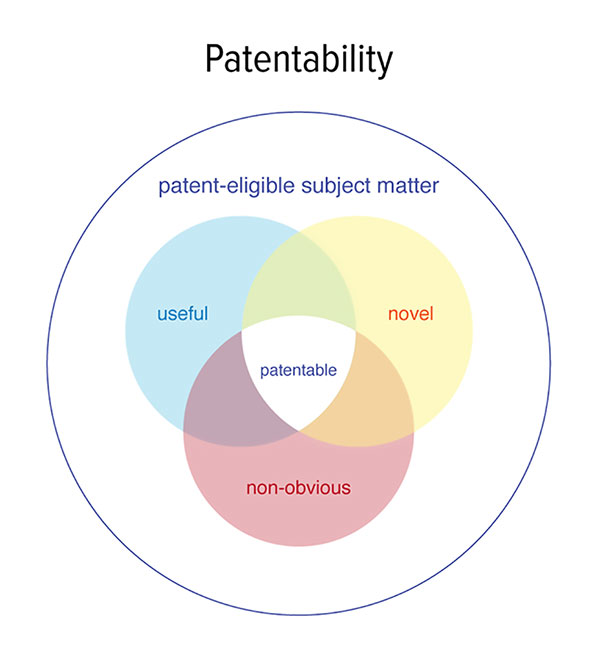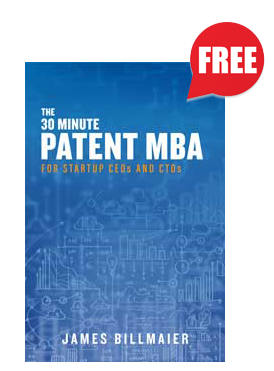This is #4 in our series of chapter excerpts from the book The 30 Minute Patent MBA by TurboPatent CEO Jim Billmaier. Want to get the full ebook for free? Grab it here.
Is Your Idea Patentable?
At the most basic level, an invention must fulfill the following requirements to be considered for a patent:
1. The subject matter must be patent-eligible. Section 101 of the U.S. Patent Act, found in Title 35 of the United States Code, states that “Whoever invents or discovers any new and useful process, machine, manufacture, or composition of matter, or any new and useful improvement thereof, may obtain a patent therefor, subject to the conditions and requirements of this title.”
2. The invention must be new or novel. If an invention was known to the public prior to an inventor filing a patent application, the invention cannot be considered new or novel, and is therefore not patentable. In other words, a patent cannot be granted if it prevents people from doing what they had previously been free to do. This requirement for novelty exists to ensure that existing inventions, also known as prior art, are not patented again. All information relevant to a patent’s claims of novelty that has been disclosed to the public, no matter the form in which it was presented, is considered prior art.
3. An invention must be non-obvious. This means that an invention must be a non-obvious improvement over existing products or practices. If it is deemed that an invention could easily be discovered by someone of “ordinary knowledge” or follow from “normal development” in a given field, the invention is not patentable. Additionally, if the invention is simply a routine or predictable combination or application of existing technology, it is not patentable.
4. An invention must be useful, meaning that the USPTO’s patent examiners must determine that an invention has a specific utility.

Now knowing what it takes for an idea to be patentable, we will assume that your solution is useful. Why else would you be creating it? We will focus the patentable invention investigation on patent-eligible, novel, and non-obvious to determine if your technology or processes contain inventive material.
Generally, when reviewing your product and roadmap for patentable inventions, you should focus on your most significant differentiators and competitive advantages. What do you want your sales and marketing people to tell potential clients? Is your company’s solution faster, cheaper, smaller, easier to use, etc.? How did you make it so or how do you plan to make it so?
When trying to determine where in your technology there may be good IP, often an engineering team is unaware that what they have created is novel and non-obvious. It’s been our ongoing experience that talented engineering staffs frequently dismiss the possibility of their creation being patentable. This is an area where automation can really help.
Automated invention discovery tools can compare product information to a vast database of prior art and help give you an idea of whether or not patentable material exists within your solution. It can also be helpful to have a patent expert examine your technical material and/or hold a brief invention investigative session with your key engineers. It is best to do this prior to publicly disclosing your innovations or offering for sale products that contain your innovations.
Going forward, have your engineering team document new projects, upgrades, and designs in enough detail to have someone of a similar skill level be able to reconstruct it without too much experimentation. This enhances future invention disclosures and will provide a ready-made basis for your next set of provisional patent applications.
This has been an excerpt from the book The 30 Minute Patent MBA by Jim Billmaier. Used by permission of the author. Want to get the full ebook for free? Grab it here.





